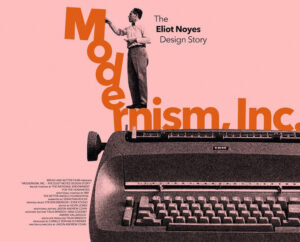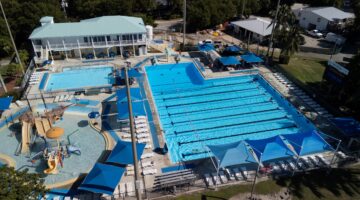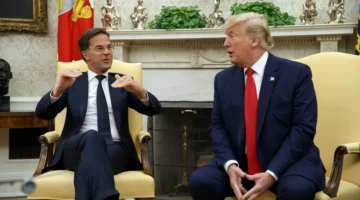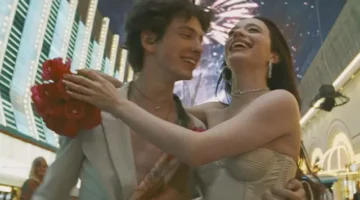Tropic Sprockets / Modernism, Inc: The Eliot Noyes Design Story
By Ian Brockway
 Jason Cohn delivers a thorough portrait of designer Eliot Noyes. The documentary is engaging, informative, and detailed with a visual style of Mondrian. [Showtimes and trailer at Tropiccinema com.]
Jason Cohn delivers a thorough portrait of designer Eliot Noyes. The documentary is engaging, informative, and detailed with a visual style of Mondrian. [Showtimes and trailer at Tropiccinema com.]
Noyes, drawn to painting and architecture studied at Harvard University in 1932 to obtain a bachelor’s degree in the Classics. The young student came under the wing of Walter Gropius, founder of Bauhaus design philosophy. Noyes was obsessed with purpose and function. The more effective a tool proved to be in purpose, the more aesthetically beautiful it became in its form.
Noyes formed a close friendship with Charles Eames of the Eames Chair, and they collaborated closely upon many designs. To Noyes, much American furniture had too many elements such as upholstery and springs. To strip something down to its core was to reveal its best purpose.
Noyes joined the US Army in WWII, and soon conceived the idea for a glider. It proved a failure until Noyes wrote to the illustrator of Terry and the Pirates. Milton Caniff included gliders in his comic and history was made.
Noyes was a man of ambition. He was hired by IBM to design the electric typewriter and then later he renovated the look of the entire company to reflect the 20th century, instead of the 19th.
Noyes was one of the first designers to see the computer as a personal asset to human life, though at the time computers were huge black rectangles with hard square buttons and reels of tape slowly spinning within, devoid of intimacy or charm.
Highlights of the documentary underscore Noyes’ refusal to act in a political manner when he is pressured by the Hippie movement to consider the health of the environment. As a result, Noyes bows out of an annual design conference.
Despite this circumstance, the documentary affirms Noyes as an unconventional artist. Under his eye, a house is an integral part of the natural world. Noyes broke up kitchens and bathrooms into separate cubicles with huge spaces of the natural environment between. Noyes also designed bubble houses with curved walls.
In having a family, Noyes had strict rules to follow: Elvis Presley’s rock ‘n’ roll was not appreciated. Only classical music could be heard. Just as in Bauhaus design, purpose and form is championed above all and there is no room for superfluous or added elements.
The film includes lively multiple images that cover the screen reminiscent of Warhol and Brian DePalma’s split screen technique.
This is a lively overview of Eliot Noyes’s legacy, and it will satisfy both the professional and the layman.
Write Ian at [email protected]
[livemarket market_name="KONK Life LiveMarket" limit=3 category=“” show_signup=0 show_more=0]









No Comment